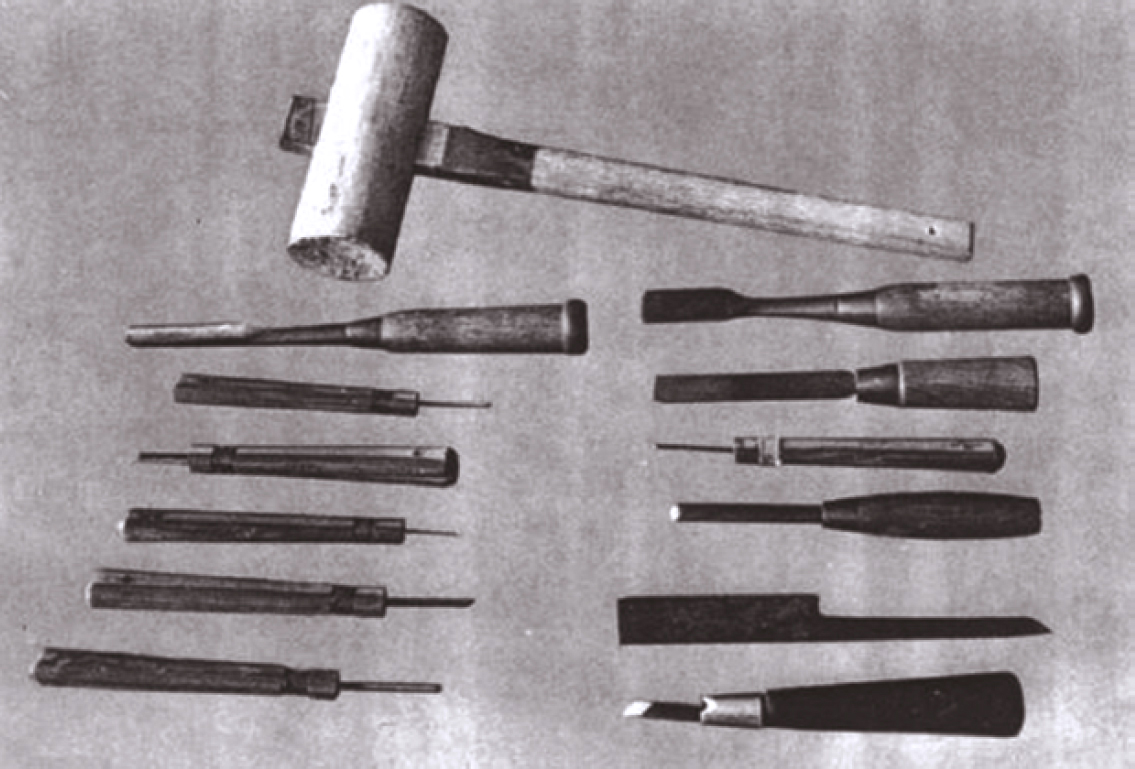

This selection of wood carving tools (above) is similar to those that would have been used by Bewick to create his master engraving of the Barn Owl (top), included in his History of British Birds (1797–1804).
13 : 18th-century wood carving knife
1797


This selection of wood carving tools (above) is similar to those that would have been used by Bewick to create his master engraving of the Barn Owl (top), included in his History of British Birds (1797–1804).
An important and aesthetically interesting side road in the history of illustration was the use of woodcuts, and later linocuts, to produce multiple printed renditions of birds. Central to that medium was the carvers’ knife, ingeniously used to fashion a relief design in wood, onto which ink was applied to create a ‘raised’ illustration which was the mirror-image of the resulting printed piece.
Perhaps the most important woodcut artist was also an ornithologist. Thomas Bewick (1753-1828) was a trained engraver from Northumberland, and his brilliance as a woodcarver led to the self-publication of the History of British Birds, one of the early great works on Britain’s avifauna. This two-volume work, divided into landbirds and waterbirds and partly following Ray and Willughby’s classification (see pages 28-29), was created and published between 1797 and 1804. It contained information partly derived from Bewick’s own observations on rural excursions, as well as the writings of naturalists of the day such as Gilbert White (see pages 34-35).
Bewick’s methods were innovatory, using hardwoods like box instead of the then traditional softwoods like pine, and carving against the grain with metal engravers’ more fine-gauged tools like the burin, a needle-shaped tool with a V-shaped cutting end. Despite the stylised appearance of the resulting black-and-white ink prints, there is much ornithological accuracy in his work. Though not discovered by the artist, Bewick’s Swan was named in his honour.
The techniques are kept alive today in their original form, and by carvers using matrices like PVC or resin, or, in the case of the most famous modern practitioner, Robert Gillmor, as linocuts. In this technique, first developed in 1905, a sheet of linoleum – generally manufactured from solidified pine resin (aka rosin) or linseed oil – is mounted on a wooden block, essentially as a substitute for wood.
Artists as respected and varied as Escher, Matisse and Picasso used the technique, but in the natural world it is best known in Gillmor’s deceptively primitive primary-coloured illustrations for the jackets of the Collins New Naturalist series. A distinguished birder and artist who co-founded the Society of Wildlife Artists in 1964, Gillmor produces illustrations to this day and in 2012 he was commissioned to produce a set of stamps for the Royal Mail.